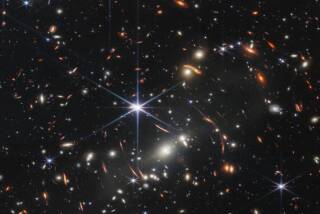Telescope Launched on Rocket
CAPE CANAVERAL, Fla. — A rocket carrying the largest diameter infrared telescope ever put into space roared from its seaside pad early Monday.
The Space Infrared Telescope Facility, known as SIRTF, is the last of four NASA spacecraft designed to peer deeper into the universe using an array of tools that measure light of varying wavelengths.
The telescope will add to the work of the Hubble Telescope, launched in 1990; the Chandra X-Ray Observatory, launched in 1999, and the Compton Gamma Ray Observatory, which operated for nine years before falling back into Earth’s atmosphere in 2000.
The telescope will look at some of the same deep-space objects as its sister craft to make comparisons between the views. It will also survey other parts of the cosmos.
The 110-pound, 33.5-inch telescope is designed to measure heat from faraway celestial objects and give scientists a view of distant solar systems being born.
“Stars are continuing to form in our own galaxy,” said Dr. Michael Jura, SIRTF interdisciplinary scientist for planetary science at UCLA. “One of the main scientific goals of SIRTF, I think, is to develop a much better understanding of how stars and planets form.”
The spacecraft will conduct its work from an Earth-trailing orbit around the sun that will allow the telescope to avoid the interference caused by Earth’s infrared-absorbing atmosphere.
“SIRTF will be following the Earth around the sun, kind of like a faithful puppy dog,” said Dr. Michael Werner, SIRTF project scientist at NASA’s Jet Propulsion Laboratory.
The launch is a long-awaited triumph for SIRTF scientists. The project was originally proposed in the mid-1970s but was repeatedly cut back and delayed.
The mission is scheduled to last at least 30 months but could be extended. Mission project manager David Gallagher said the total mission cost is about $1.19 billion.
The first images are expected to be available to scientists in late October and made public in December.






